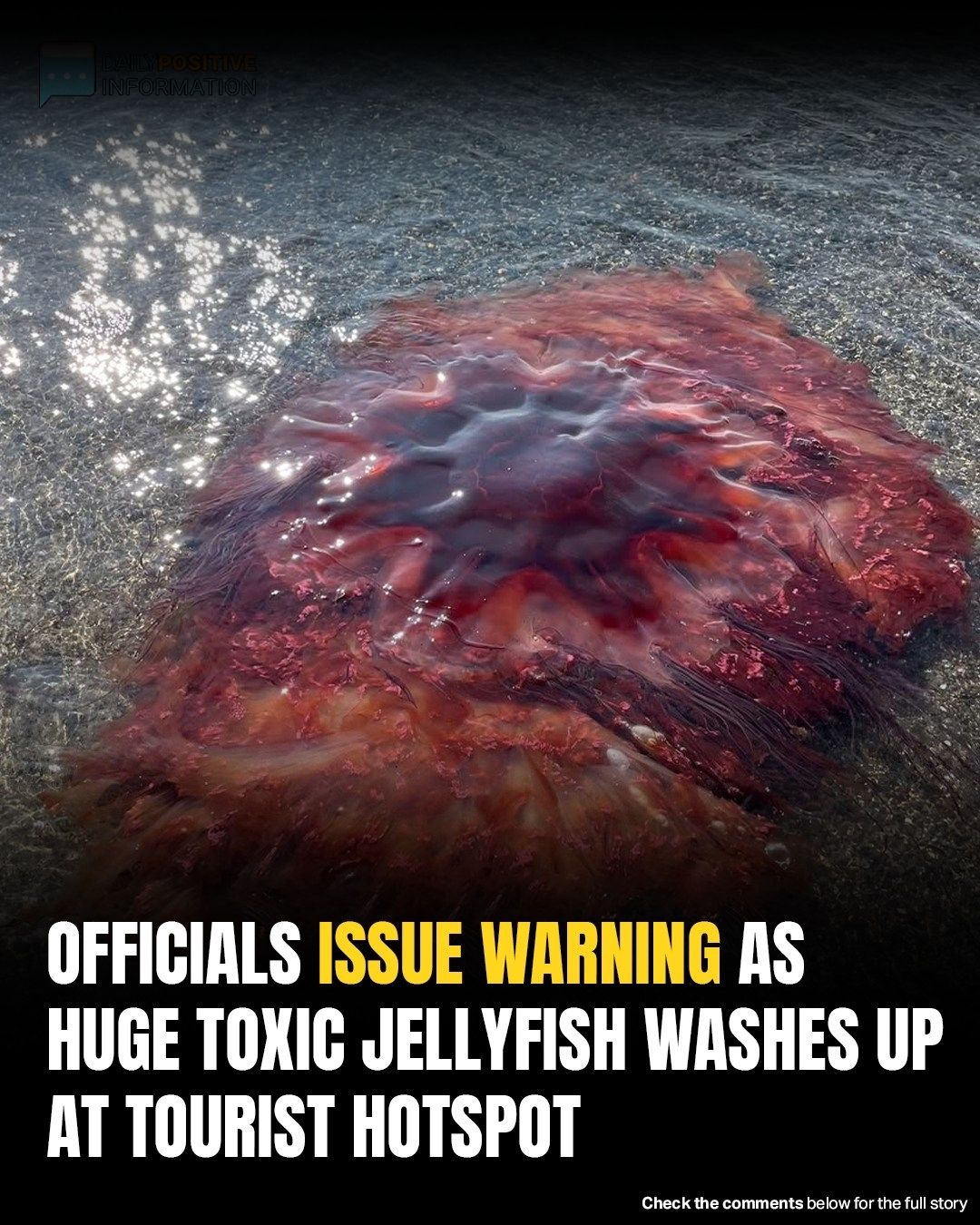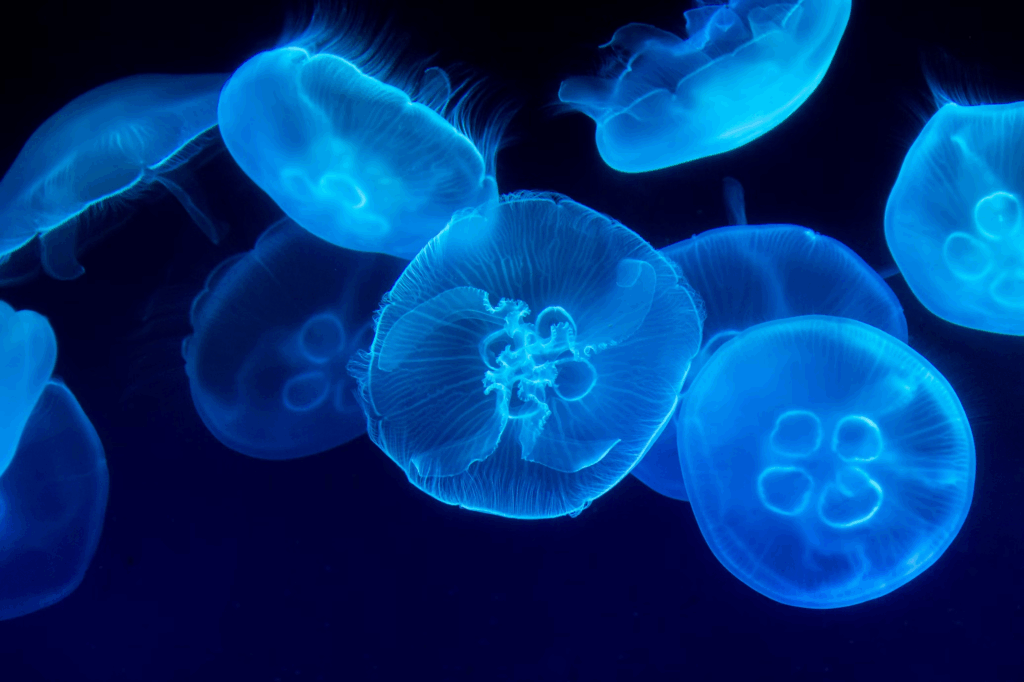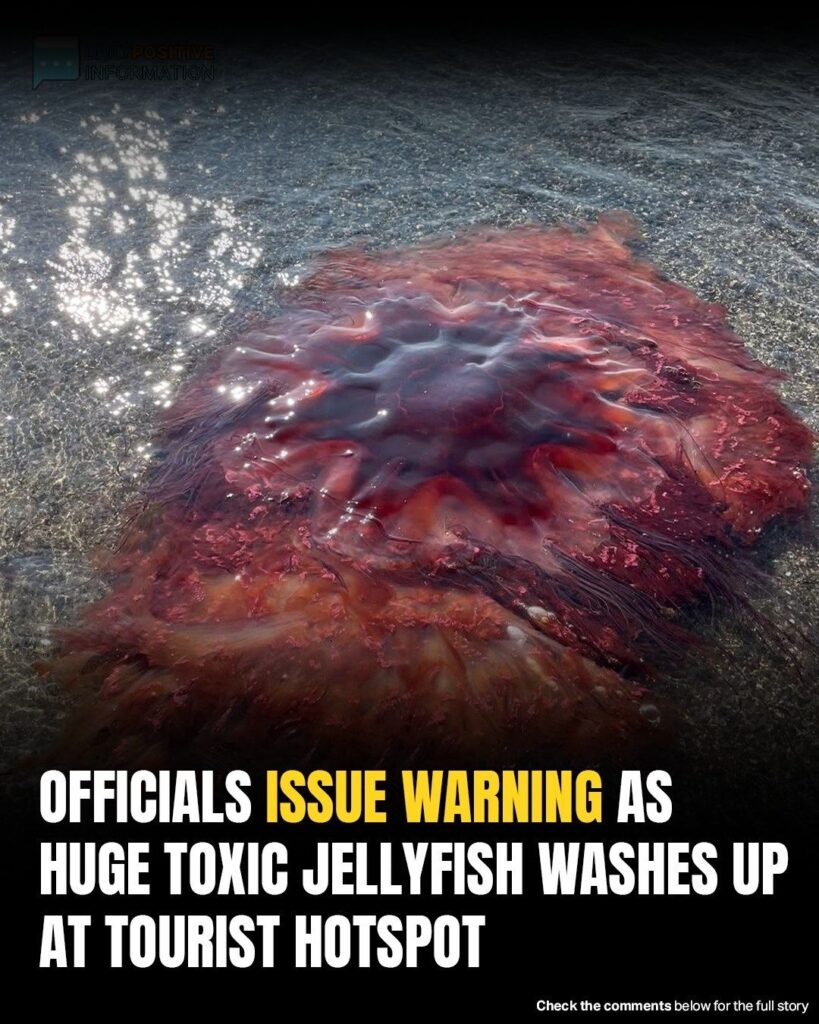A nightmare from the deep has just washed ashore at a popular vacation destination, sending chills down the spines of locals and tourists alike. Imagine strolling along the beach, enjoying the summer sun, when you spot something truly enormous, pulsating, and terrifyingly beautiful. This isn’t just any jellyfish; it’s a colossal creature, and it carries a sting you’ll never forget.
If you’ve ever been stung by a jellyfish, you know that searing agony—a pain that lingers, a memory you desperately wish you could erase. I still remember the searing pain from a small one when I was a kid. It was enough to make me scream. Now, imagine that pain, multiplied by a creature so vast, it makes your skin crawl.
We’re talking about the Lion’s Mane jellyfish, and to put its sheer size into perspective, some of these giants can boast tentacles reaching lengths of up to 120 feet! That’s longer than a blue whale, and roughly four-fifths the height of the Statue of Liberty! Their massive, bell-shaped bodies can span nearly 5 feet across, making them an undeniable presence in the water.
Local authorities in the City of South Portland, Maine, are now sounding the alarm. Taking to Facebook, they posted an urgent warning: “Spotted this weekend at Willard Beach: A nearly 5-foot wide lion’s mane jellyfish!”

If you encounter one of these magnificent, yet dangerous, creatures, here’s what you MUST do:
DON’T TOUCH IT! Seriously, resist the urge. Their sting is excruciating and can cause severe swelling and welts. The Wildlife Trust confirms they “can give a very nasty sting, so consult a doctor if swelling or weals are severe.”
OBSERVE IT! From a safe distance, they are truly fascinating and beautiful to behold.
NOTIFY A LIFEGUARD! If you spot one washed up at Willard Beach, immediately alert a lifeguard. They are equipped to safely help it back into the water with a shovel.
Sightings of these massive jellyfish have been on the rise since 2014, according to Nicholas Record, a senior research scientist at Bigelow Laboratory for Ocean Sciences. In a 2019 interview, he noted that Lion’s Mane jellyfish now account for almost all sightings in the region. “In a typical year, the biggest ones that people would report are typically the size of a dinner plate,” Record explained. “And this year, I’ve gotten several reports of some that are two feet and a couple that are five feet across.”

While they’re generally a sub-Arctic species and not entirely new to the Gulf of Maine, their sheer size and overwhelming presence this year is what makes this phenomenon truly unique—and a cause for concern.
Share this urgent warning with anyone planning a trip to coastal Maine, or any beach where these giants might roam! Stay safe, stay vigilant, and let’s respect the powerful, sometimes terrifying, wonders of our oceans.
#JellyfishWarning #MaineBeaches #LionsManeJellyfish #OceanLife #TravelSafety #BeachAlert #NatureIsWild #DontTouch
Beta feature


